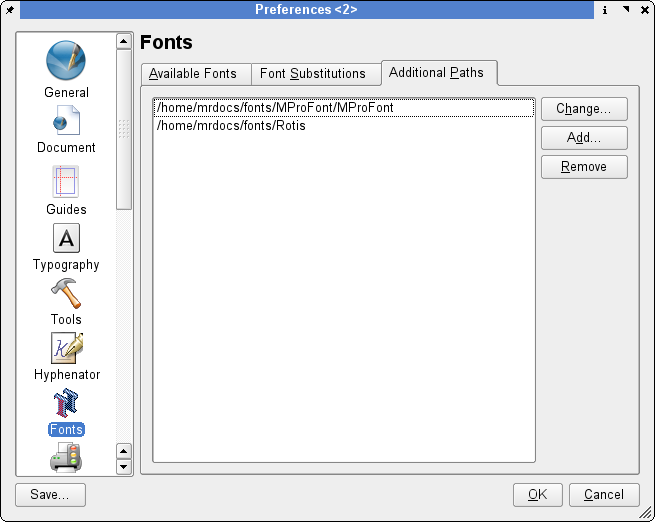
According to the web page, 1.4.x is a stable version, whereas 1.5.x is a development version.ġ.5.x has some interesting things in its feature list, like IDML import. I’ll be looking at both Scribus 1.4.5 and Scribus 1.5.0.
#Scribus wiki mac#
I’ll be using a Mac most of the time, but I’ll also take sneak peeks at the Windows and Linux versions along the way. What I intend to do here is keep track of my questions and the answers I found.Īnyone else in the automation game is bound to have similar questions and might find my notes useful. I just spent half an hour with Scribus and its documentation, and as far as I can tell, the available documentation is not a good resource for the kinds of questions I have as an system designer and automator. As I go, I try to map things I know from other environments onto things I discover in Scribus. I’m looking for things that I’m familiar with. Getting into Scribus will be different for everyone. And Scribus is definitely powerful enough to be useful for a range of real-life projects. I want to make sure I can help automate projects where Scribus is an option. Scribus will only improve if more people start using it it’s a chicken-and-egg situation. This time around I decided to look mainly at what it can do, rather than concentrate on what it cannot do. As far as I could tell, Scribus was nowhere near as powerful as InDesign, so it would not be an option for many people. I looked at Scribus a while back and did not get very far before I lost interest. So, after ten years of neglecting it, I’m getting back up to speed on automation with QuarkXPress 2015, and I am also looking at Scribus. The company becomes increasingly erratic and difficult to work with for a third-party developer. As far as I can tell, Adobe is ‘doing a Quark’ on a large subset of its users. Scribus is a relatively complex program, so make sure to take some time to familiarize yourself with it before diving in to far.I bit the bullet – I am going to dig into Scribus, and add it to my toolkit.Īdobe is not what it used to be. The page numbers should be FreeSans Bold Oblique 16pt and black in color. In these cases, Monaco 10pt can be used instead of Courier.Īrticles of a given type should preserve this choice from the first instance onwards.įor articles which are longer than two pages, there should beĪt the bottom of the even page number in FreeSans Bold Oblique 14pt. In some instances, (C or C++ code) Courier is too wide to prevent multiple line wraps.
#Scribus wiki code#
Programming code or instructions that must be typed in as part of a tutorial should be Courier 10 Pitch Regular font 10pt. Normal text within the body of an article should be FreeSans Regular 12pt. Section headings should be FreeSans Bold 14Pt and underlined. The title font should be taken from one of those present in the standard version of Scribus.
#Scribus wiki how to#
Information_for_new_volunteers contains full details of where to obtain and how to install the standard fonts.
#Scribus wiki pdf#
This results in PDF files which contain the wrong fonts. If the document is converted with a non-LINUX version of Scribus, the FreeSans font set is typically not available. In the new templates, authors should are no longer credited at the end of the article (they have a photo credit instead).


The article title area is 180mm wide and 30mm deep. At the end of the page is an overview of additional Scribus resources to assist those new the application.Īll page templates are now stored within TheMagPiGit in the magpi-templates repository Scribus is used as the standard layout tool for the magazine, it is relatively complex so the sections below detail the templates and formatting to be used for all MagPi articles.


 0 kommentar(er)
0 kommentar(er)
